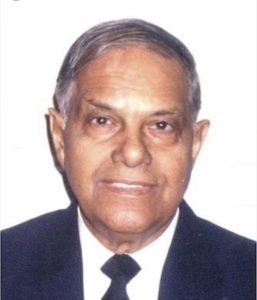
Ozzie Williams
*Ozzie Williams was born on this date in 1921. He was a Black Engineer.
From Washington, D. C., his father was Oswald S. Williams, a postal worker, and his mother was Marie (Madden) Williams, a housewife. He grew up in New York, graduating from Boys High School in Brooklyn in 1938. Williams became interested in engineering as a teenager. He loved to make model airplanes and decided to become an engineer after a family friend described an engineer as a person who designs things.
Williams went to New York University, where a dean discouraged him because he was black. Williams completed his bachelor's degree in aeronautical engineering at New York University in 1943; he received his master's degree from the same institution in 1947.
Williams was a senior aerodynamicist with the Republic Aviation Corporation during World War II. He helped to design the P47 Thunderbolt, which was pivotal in the war effort. In 1947 Williams moved to the Babcock and Wilcox Company, where he was a design draftsman. He then spent two years as a technical writer with the United States Navy Material Catalog Office, leaving in 1950 to take an engineering position at Greer Hydraulics, Inc. At Greer, as a group project leader, he was responsible for developing the first experimental airborne radio beacon, which was used to locate crashed airplanes.
In 1956, Williams moved to the Reaction Motors Division of Thiokol Chemical Corporation, where he was responsible for pioneering work on small rocket engines. Grumman International hired Williams as a propulsion engineer in 1961 because of his expertise in liquid-fuel rockets. He had published several papers on the subject, including "On the feasibility of liquid bipropellant rockets for spacecraft attitude control," which was translated into Russian.
At Grumman, Williams managed the development of the Apollo Lunar Module reaction control subsystem. Williams was fully responsible for the $42 million effort for eight years. He managed the three engineering groups that developed the small rocket motors, which used 100 pounds of thrust compared to the 10,500 pounds of thrust of the lunar module's main engine that guided the lunar module, the part of the Apollo spacecraft that landed on the moon.
Williams went on to become their company Vice President in 1974. After leaving Grumman, he became a marketing professor at St. John's University in Queens, New York, where he completed an M.B.A. in 1981. Williams was a member of the American Institute of Aeronautics and Astronautics, as well as an associate fellow and past chair of its Liquid Rockets Technical Committee. In 1986, Williams became a professor at St. John's University, teaching marketing. He continued to teach for 12 years.
The second black person to receive a degree in aeronautical engineering, in 1993, O. S. and Doris Reid Williams celebrated their fiftieth wedding anniversary. Ozzie Williams died in 2005. His name is on the National Air and Space Museum's wall of honor.
Black Contributors to Science and Energy Technology.
U. S. Department of Energy (Washington, D.C.: Office of Public Affairs), 1979, p. 12-13.
DOE/OPA-0035(79)
In Black and White:
A Guide to Magazine Articles,
Newspaper Articles and Books Concerning More than 15,000 Black Individuals and Groups.
Mary Mace Spradling, ed. (Detroit, MI: Gale Research Co.), 1980. p. 84-85
Image: Phyllis Williams (Daughter in Law)